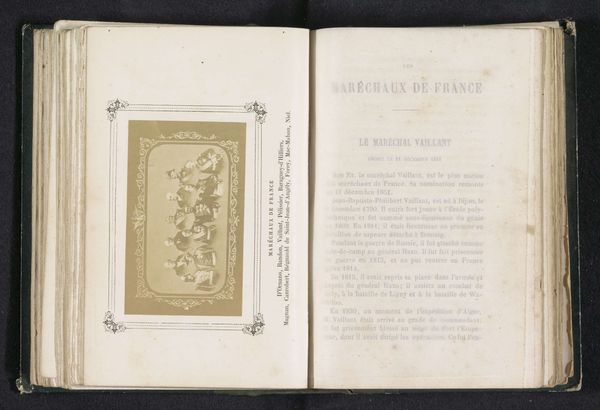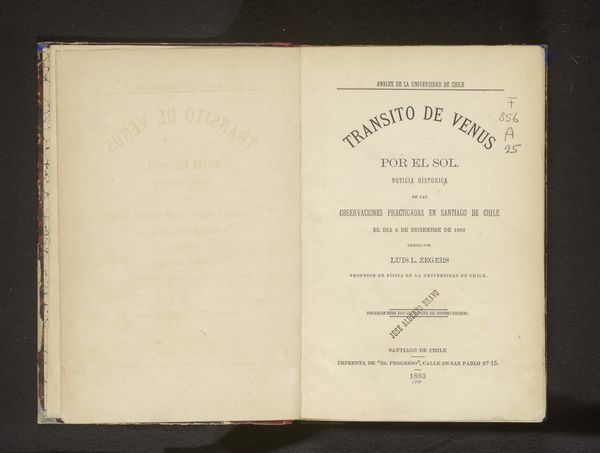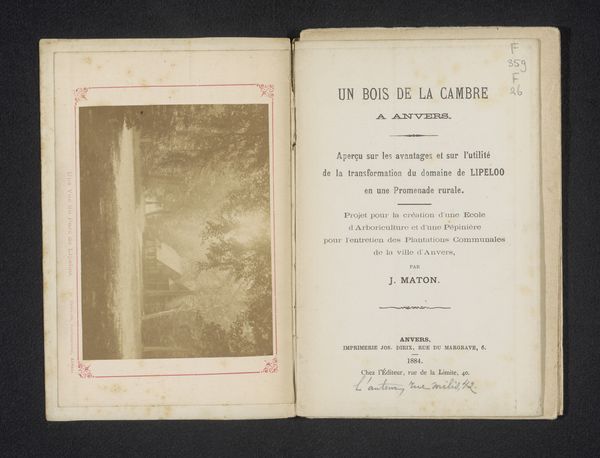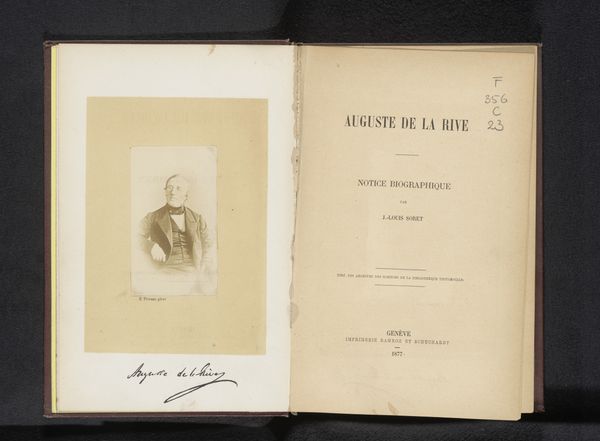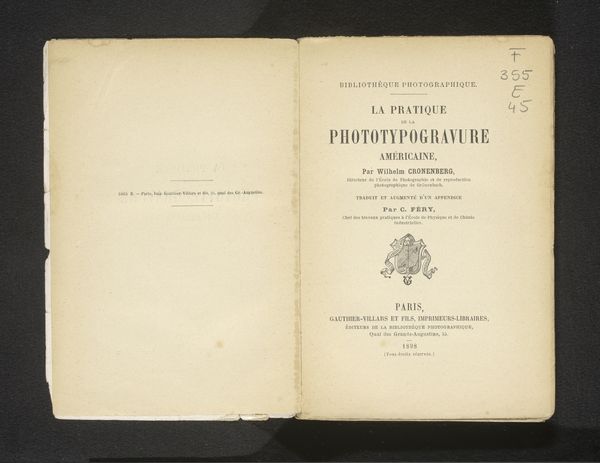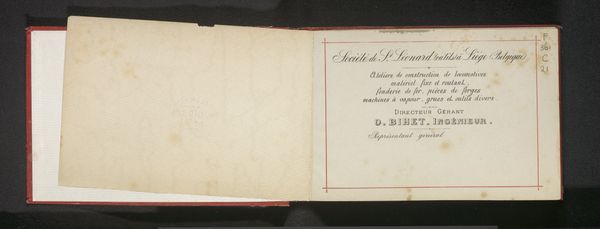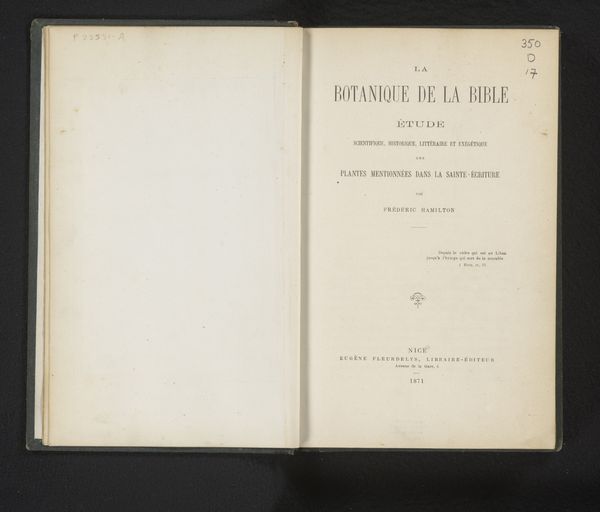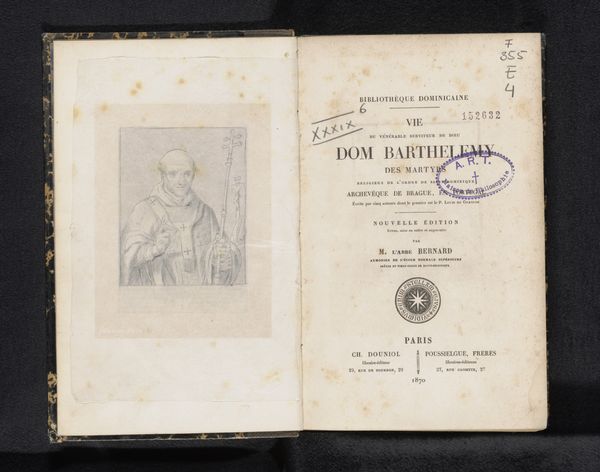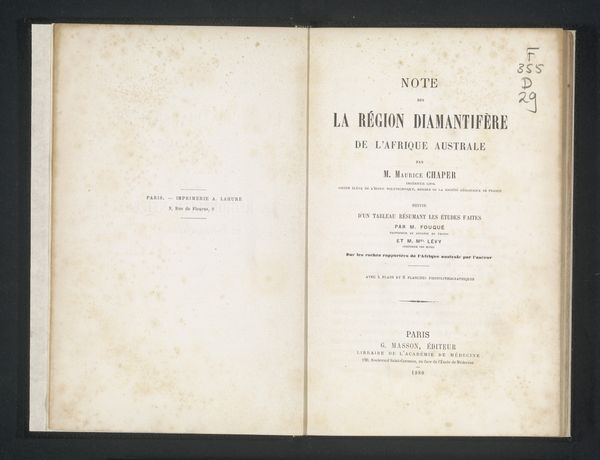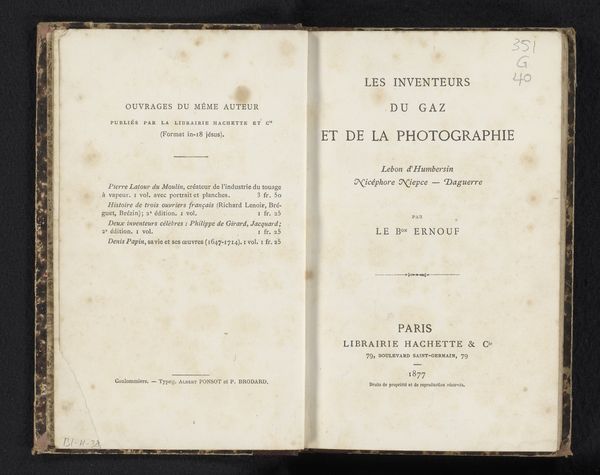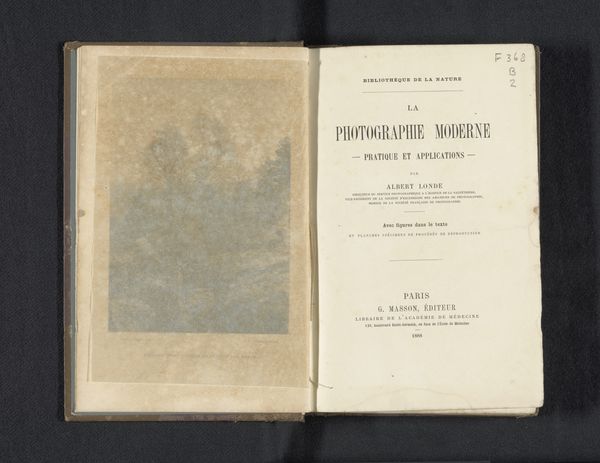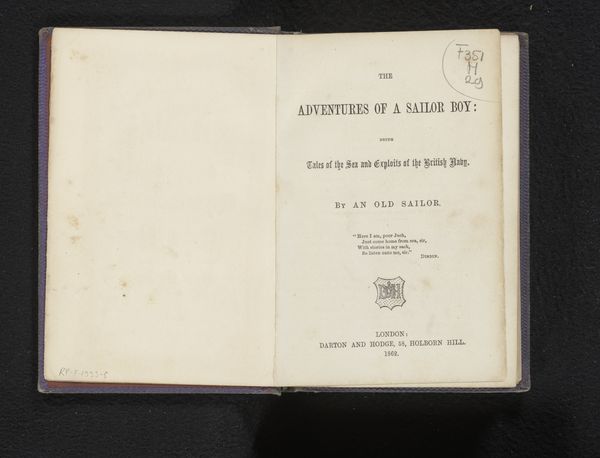
La vie de M. le Prévost fondateur de la congrégation des Frères de Saint-Vincent de Paul 1803-1874 1890
0:00
0:00
print, paper
#
portrait
#
aged paper
#
homemade paper
#
paper non-digital material
#
paperlike
# print
#
book
#
sketch book
#
paper texture
#
paper
#
personal sketchbook
#
journal
#
history-painting
#
historical font
#
columned text
Dimensions: height 216 mm, width 140 mm, thickness 35 mm
Copyright: Rijks Museum: Open Domain
Editor: Here we have an 1890 print by Charles Gay: "La vie de M. le Prévost fondateur de la congrégation des Frères de Saint-Vincent de Paul 1803-1874," presented on paper. It has a sepia-toned, aged quality, almost like looking at a historical document. What strikes you most about this piece? Curator: It's fascinating how this image functions as a portal. Look at the symbols carefully: the cross subtly integrated into the stamp, the framed portrait mirroring religious icons, even the stylized text. Can you feel how these elements, drawn from a well of collective memory, anchor the subject – Monsieur le Prévost – within a lineage of faith and service? Editor: I do see that now. It feels very intentional. So, it's not just a biography; it’s imbuing him with this symbolic importance? Curator: Precisely. The choice of imagery speaks volumes. Think about why Gay chose these particular symbols. What emotions or cultural values were they designed to evoke in the viewer? Editor: I guess piety, reverence... maybe even a sense of established authority? The composition reminds me of older religious texts. Curator: You've hit upon something crucial. It suggests continuity – a cultural echo resonating through generations. Consider the psychological effect, how visual symbols trigger subconscious connections to history and shared beliefs. Is this perhaps hagiography rather than simply biography? Editor: That’s really given me a different way to consider portraits - not just as representations, but almost as vessels for cultural memory. Curator: Exactly! And that cultural memory then shapes how we perceive both the subject, and the values that he embodied.
Comments
No comments
Be the first to comment and join the conversation on the ultimate creative platform.
